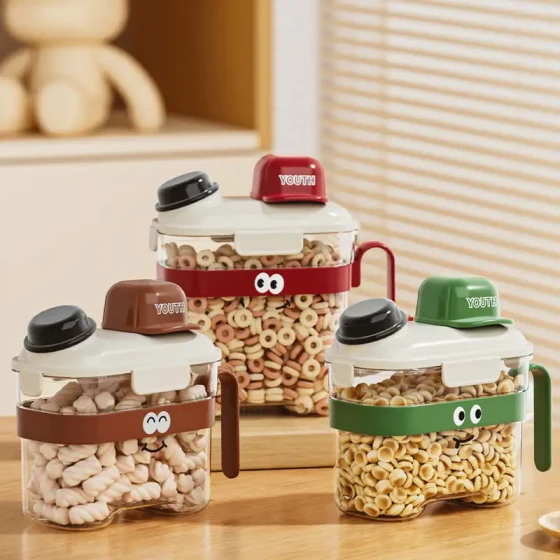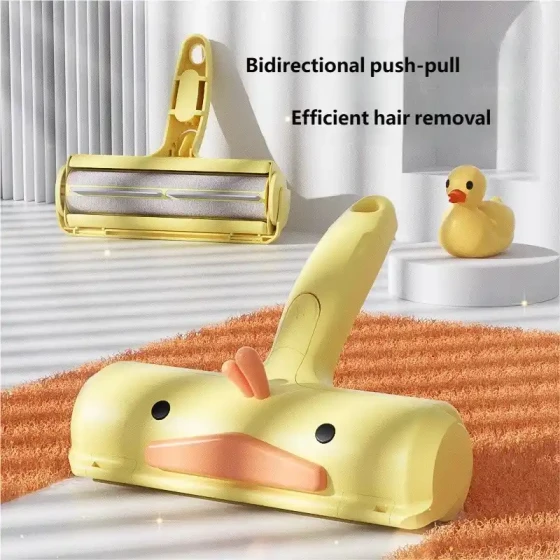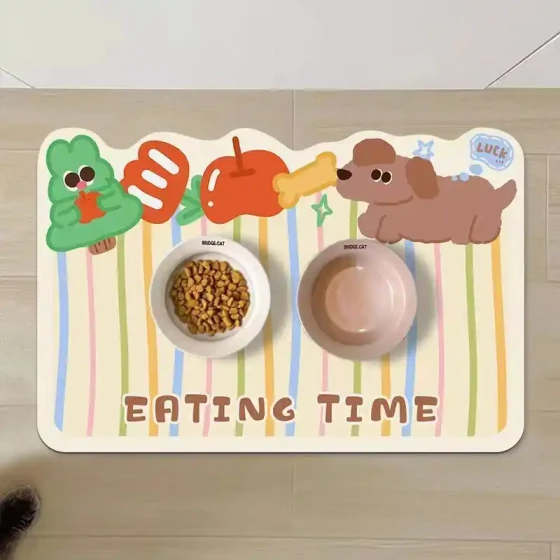2-month-old kitten_Full guide to feeding and caring for kittens
At two months old, kittens are in a critical period of rapid growth. Their immune systems are not yet fully developed, so they require especially detailed feeding and care. Scientific and reasonable care helps kittens grow healthily and happily, transforming from “little bundles” into lively and adorable “fluffy balls.”

The special characteristics of 2-month-old kittens
At two months old, kittens have usually completed the transition from mother’s milk to solid food (weaning). At this stage, kittens are energetic, curious, and full of a desire to explore the world around them. However, their bodies are still fragile; their digestive systems are delicate, and their immunity is relatively low, so special attention must be paid to diet, hygiene, and disease prevention.
Diet section: Eat well to grow strong
“Food is the paramount necessity of the people,” especially for kittens. A reasonable diet is the foundation for their healthy growth.
- Cat food selection: high protein, easy to digest, kitten-specific
Two-month-old kittens need high-protein, high-energy food to meet their rapid growth nutritional needs. It is crucial to choose cat food designed specifically for kittens, whether dry or wet food, but be sure it is "kitten-specific." This kind of cat food has a nutrition ratio more suitable for kittens and usually has smaller pellets that are easier for them to chew and digest. When first introducing dry cat food, you can soften it with warm water or kitten-specific goat milk powder (never use cow’s milk, as most cats are lactose intolerant) to help the kitten adapt more easily. As the kitten's teeth develop, you can gradually transition to dry food. - Feeding frequency and portions: small frequent meals
Kittens have small stomach capacities but grow quickly and need frequent energy replenishment. It is recommended to feed 4-6 times a day, dividing the total daily cat food into multiple portions following the "small frequent meals" principle. For example, feed four times a day, about half a cup (~120 ml) each time, and adjust according to the kitten’s appetite and weight gain. Ensure the kitten's belly is full but not bloated after feeding. Some experts suggest that kittens can have dry food freely available throughout the day during their first few months to avoid prolonged fasting that can affect development. - Water: the essential source of life
Water is vital to a cat’s health. Always provide kittens with sufficient, clean drinking water. It’s best to use ceramic, stainless steel, or glass water bowls and clean them daily with fresh water. Ensure the water bowl is placed in a quiet, easily accessible location for the kitten. - Forbidden foods: avoid these "landmines"
Some human foods are extremely toxic to cats and must never be fed casually.- Milk and dairy products: Most cats are lactose intolerant; drinking milk may cause diarrhea and digestive issues.
- Chocolate and caffeine: Contains theobromine, which is toxic to cats and may cause central nervous system problems, even life-threatening.
- Onions, garlic, leeks, scallions: These allium plants contain sulfides that destroy cats’ red blood cells and cause anemia.
- Raw meat, raw fish, raw eggs: May contain salmonella, E. coli, and parasites; raw egg whites contain avidin, which affects vitamin B absorption.
- Bones (especially fish and chicken bones): May scratch the digestive tract and cause internal injury.
- Grapes and raisins: May cause kidney damage and even kidney failure.
- Human snacks: Processed foods high in salt, sugar, and fat are unsuitable for cats and may lead to obesity, diabetes, and other issues.
Care section: meticulous nurturing
Besides eating and drinking well, daily care is also key to healthy kitten growth.
- Environment setup: safe, warm, and comfortable
Provide kittens with a warm, dry, quiet, and safe independent space. The ideal indoor temperature should be maintained around 25-30°C (77-86°F). Ensure there are no potential hazards in the home, such as fragile items, toxic plants, electric wires, etc., like a "baby-proofed" home for cats. - Toilet training: start with the litter box
Most two-month-old kittens have already learned to use the litter box. Prepare a low, easily accessible litter box and place it in a fixed, quiet corner. When first bringing the kitten home, gently place it in the litter box and use its paws to scratch the litter a few times to help it become familiar with the scent and environment. Clean the litter box at least once or twice daily to keep it clean, encouraging the kitten to use it. - Cleaning hygiene: moderate is enough
- Bathing: Kittens have fragile bodies and frequent baths are not recommended. Unless the kitten is especially dirty, avoid full baths before three months old. Daily cleaning can be done with pet wipes or a warm damp towel for partial cleaning.
- Ear, eye, and nail care: Regularly check the kitten’s ears and eyes and gently wipe secretions with a clean cotton ball or pet wipes. Nails also need regular trimming to prevent scratching themselves or furniture. Start building the kitten’s tolerance for these routines early through gentle handling of their paws and ears, rewarding them to foster cooperation.
- Vaccination and deworming: the "guardians" of health
Vaccination and deworming are the two major protection measures for a kitten's health.- Vaccination: Antibodies kittens receive from mother’s milk gradually disappear around 8-9 weeks of age, at which point their resistance to diseases is lowest. This is a critical time for vaccination. Core vaccines (such as the feline triple vaccine preventing panleukopenia, rhinotracheitis, and calicivirus) usually start at about 8 weeks old, with boosters every 3-4 weeks until about 16 weeks old for full immunization. Rabies vaccine is generally given between 12-16 weeks of age. Always follow the veterinarian’s advice to develop and complete the vaccination schedule on time.
- Deworming: Kittens are very vulnerable to internal and external parasites. Even indoor-only cats may become infected through parasite eggs brought in by owners. Internal deworming (e.g., for roundworms, hookworms, tapeworms) is usually recommended starting at 6-9 weeks old, then monthly until 6 months old, and then every 3 months as adults. External deworming (for fleas, mites) typically starts at 8 weeks, then monthly thereafter. The choice and frequency of deworming medication should be consulted with a veterinarian, based on the kitten’s weight and living environment. Carefully monitor the kitten’s energy and appetite before and after deworming to ensure no abnormal reactions occur.
Health section: watch for the kitten's "minor ailments"
Kittens have sensitive constitutions, and illness often progresses rapidly, so owners need to observe carefully.
- Common symptoms of illness:
- Lethargy, poor appetite: If the kitten suddenly becomes inactive and loses interest in favorite toys and food, it may be a sign of illness.
- Vomiting, diarrhea: The kitten’s digestive system is delicate; improper diet, parasite infections, or viral infections may cause these symptoms. Severe cases can cause dehydration.
- Breathing abnormalities: Sneezing, runny nose, coughing, rapid breathing, or open-mouth breathing may indicate upper respiratory infection.
- Weight loss or failure to gain weight: Kittens should gain 5-10 grams per day; if weight stagnates or decreases, be alert.
- Unusual crying or restlessness: May indicate discomfort or pain.
- Increased eye and nasal discharge: Especially thick yellow-green discharge, possibly indicating infection.
- Scratching ears or skin: Could be signs of ear mites or skin diseases.
- When to see a vet:
If a kitten shows any of the above symptoms, especially lethargy, persistent vomiting or diarrhea, high fever (normal body temperature 37.8-39.2°C), no appetite for over 24 hours, or difficulty breathing, take the kitten to a veterinarian immediately. Do not delay to avoid missing the best treatment opportunity.
Play and socialization: the little secrets to happy growth
Besides physical health, mental health is equally important. Appropriate play and socialization help kittens build confidence and develop good character.
- Toy selection: safety first
Choose safe, chew-resistant toys of appropriate size for kittens. Laser pointers, teaser rods, small balls, and catnip toys can stimulate their play instincts. Avoid strings, plastic bags, and items that can be swallowed or cause choking. - Socialization: cultivate "emotionally intelligent" cats from an early age
Kittenhood is a crucial period for personality development. Early exposure to different people (including children and strangers) and interaction with other vaccinated gentle pets (dogs, other cats) helps kittens better adapt to future life and reduces fear of unfamiliar environments and things. Through gentle stroking, cuddling, and interactive play, build the kitten’s trust and closeness with humans. Also help kittens gradually get used to everyday sounds like vacuum cleaners, hair dryers, and doorbells to avoid over-sensitivity and stress reactions as they grow. If a kitten starts biting or scratching during interaction, immediately stop to show that this behavior will lead to "no friends," and under veterinary guidance, mild correction methods like spray bottles can be used.
Common questions and answers (FAQ)
- Q1: Can 2-month-old kittens be bathed?
A1: Frequent bathing is not recommended for 2-month-old kittens. Their resistance is weak and bathing may cause them to catch a cold and become sick. Usually, it’s advised to wait until after vaccination completion before bathing. Daily cleaning can be done with a damp towel or pet wipes. - Q2: Can kittens drink human cow’s milk?
A2: No. The vast majority of cats are lactose intolerant and cannot digest lactose in cow’s milk, which easily causes diarrhea, vomiting, and other digestive problems. If milk supplementation is needed, use kitten-specific goat milk powder. - Q3: How much cat food should a 2-month-old kitten eat?
A3: The amount depends on the brand of cat food, the kitten’s weight, and activity level. Generally, a 2-month-old kitten can be fed 4-6 meals daily, totaling approximately 120-240 ml of kitten food per day, or following the recommendations on the cat food packaging. Maintaining the "small frequent meals" principle is very important. - Q4: How much do vaccination and deworming cost for kittens?
A4: Costs vary by region, veterinary clinic, and product brand. Typically, a dose of the feline triple vaccine costs between 100-200 RMB, with the rabies vaccine similar. Deworming medications range from tens to over a hundred yuan depending on brand and formulation (internal, external, or combined). It's recommended to consult a local licensed vet clinic for exact pricing. - Q5: How to tell if a kitten is sick?
A5: Observe the kitten’s energy levels, appetite, water intake, stool condition, breathing, body temperature, and any abnormal secretions (such as eye or nasal discharge). If there is lethargy, persistent vomiting or diarrhea, high fever, or no eating for more than 24 hours, seek veterinary care immediately.
Summary
Caring for a two-month-old kitten is like caring for a curious yet delicate "little baby." They are full of curiosity about the world but need our patience and careful attention. From scientific feeding and detailed care to vaccination, deworming, and early socialization training, every step affects their future health and happiness. As long as we master these key points and give them enough love and companionship, your kitten will surely "eat well, grow strong," and thrive into a lively, affectionate, and charming family member!





